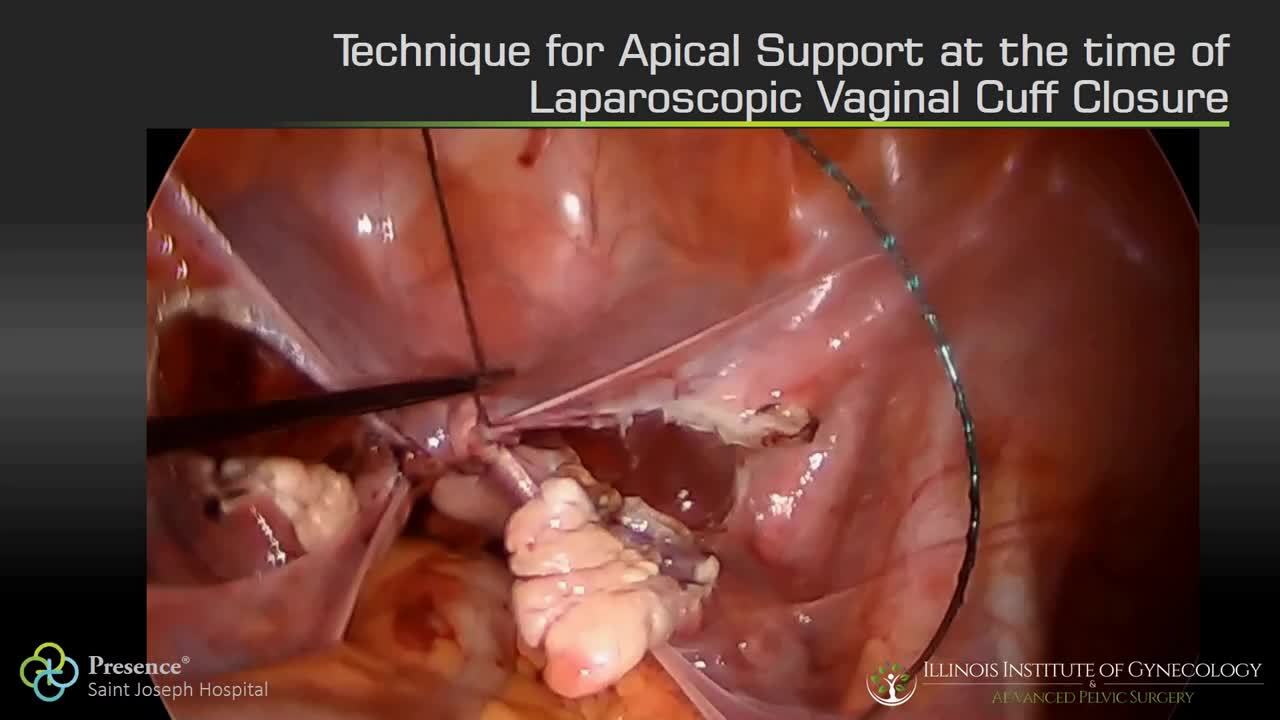Brought to you by the Society of Gynecologic Surgeons. Apical suspension performed at the time of benign hysterectomy is recommended to decrease the risk of pelvic organ prolapse. Incorporating native, level 1 uterosacral ligaments into vaginal cuff closure from a laparoscopic approach provide the benefits of direct visualization of the ureters, improved access to the paravaginal space, and decreased estimated blood loss. In the video, the authors demonstrate a laparoscopic vaginal cuff closure technique that incorporates the uterosacral ligaments for apical support when performing a benign hysterectomy.
